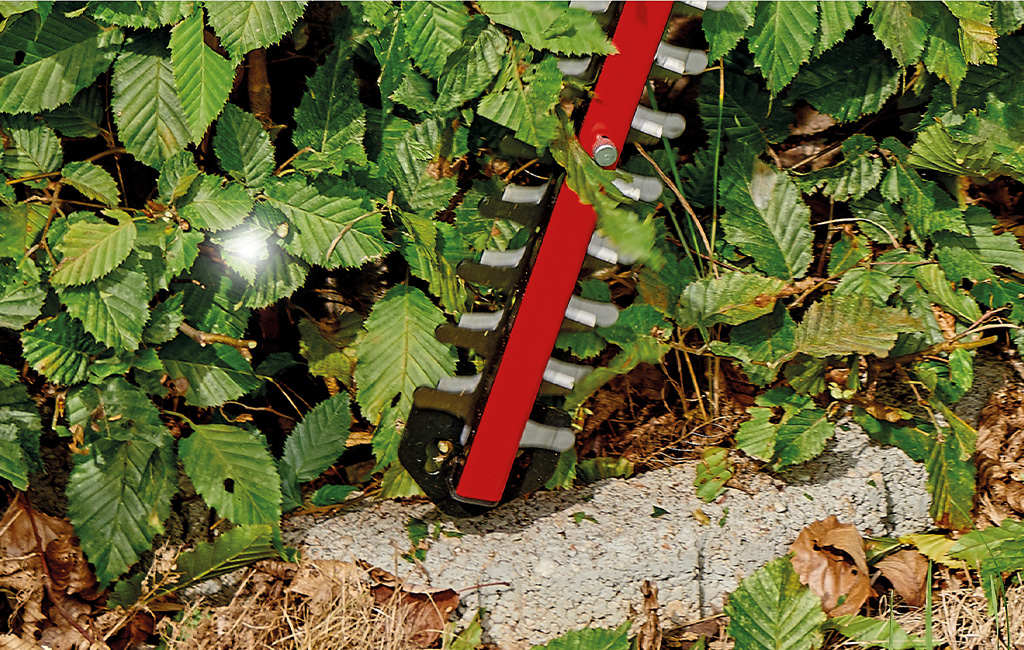The Ultimate Guide: Tips & Tricks for Proper Timing in Hedge Trimming
Hedges are a beautiful addition to many gardens, providing structure, greenery, and privacy between neighbours. From classic boxwood to lush beech and thuja, hedges of all types need regular care to stay at their best. But when exactly should you reach for the trimmers? And when is it better to let them rest to safeguard both the health of your hedge and the wildlife it shelters?
In this blog post, we explain these questions and also discuss the types of power sources for hedge trimmers, highlighting which is best suited for your garden. Find out everything you need to know about hedge trimming so you can get started right away.
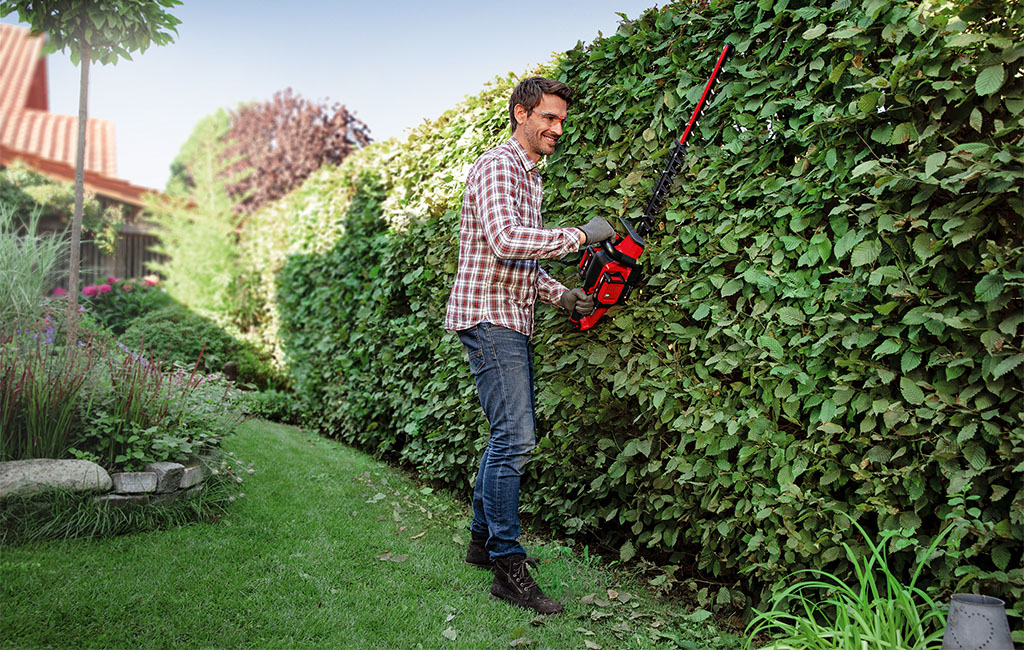
When is the right time?
Hedges older than two years should be shaped into the desired form at least once a year, with ideally two maintenance trims annually. Generally, every trim stimulates the hedge to produce new growth. The optimal timing may vary depending on the plant species, but in general, the first trim should take place by the end of February or early March, before the first shoots emerge. The subsequent rapid growth will help conceal any unsightly cut surfaces and result in a densely packed hedge.

The second trimming can be done in summer or autumn, depending on the plant species. External temperature is crucial: never trim a hedge at temperatures below 5 degrees Celsius. New shoots that are not fully developed could be damaged by frost. Shaping cuts should never be performed in sub-zero temperatures or direct sunlight, as the fresh cut surfaces are highly susceptible to such conditions!
How to trim properly?
The annual growth of the hedge should never be completely cut back (even outside the protected period). Depending on the plant species, an optimal trim involves cutting back to half or a maximum of one-third of the length of the young shoots.
The hedge should always be trimmed in a slightly conical or trapezoidal shape. This ensures that the lower part of the hedge receives sufficient light and prevents bare spots from forming in this area. A slightly tapered cut on the top is also advisable, as it helps prevent excessive snow accumulation on the hedge over winter, reducing the risk of snow breakage.
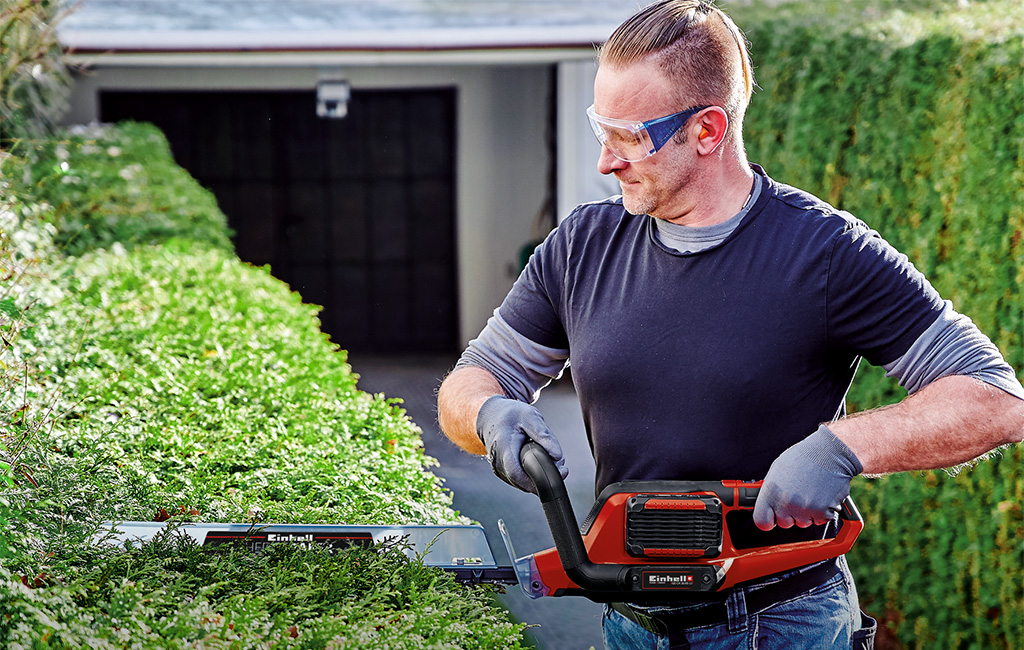
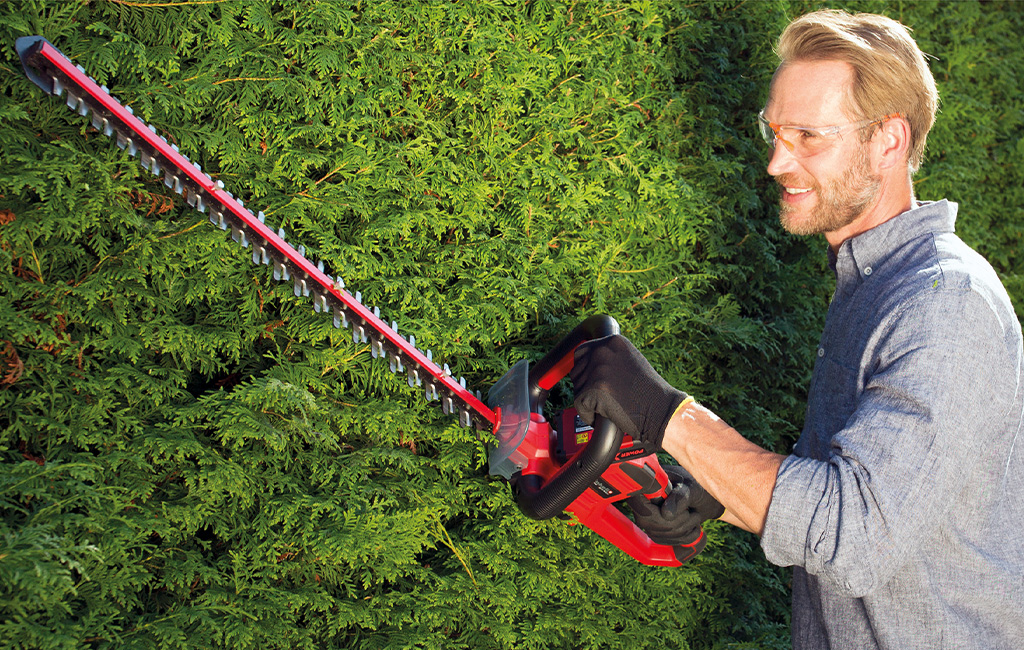
The right tool
Hedge trimmers are available in various models, whether it's a petrol hedge trimmer, electric hedge trimmer, or a cordless hedge trimmer – the question remains the same: with or without a cable?
Petrol Hedge Trimmer
A petrol hedge trimmer is useful for long and tall hedges. If you want to shape such a hedge, it requires a lot of power and endurance. The powerful motor of these hedge trimmers allows even cutting of thicker branches.
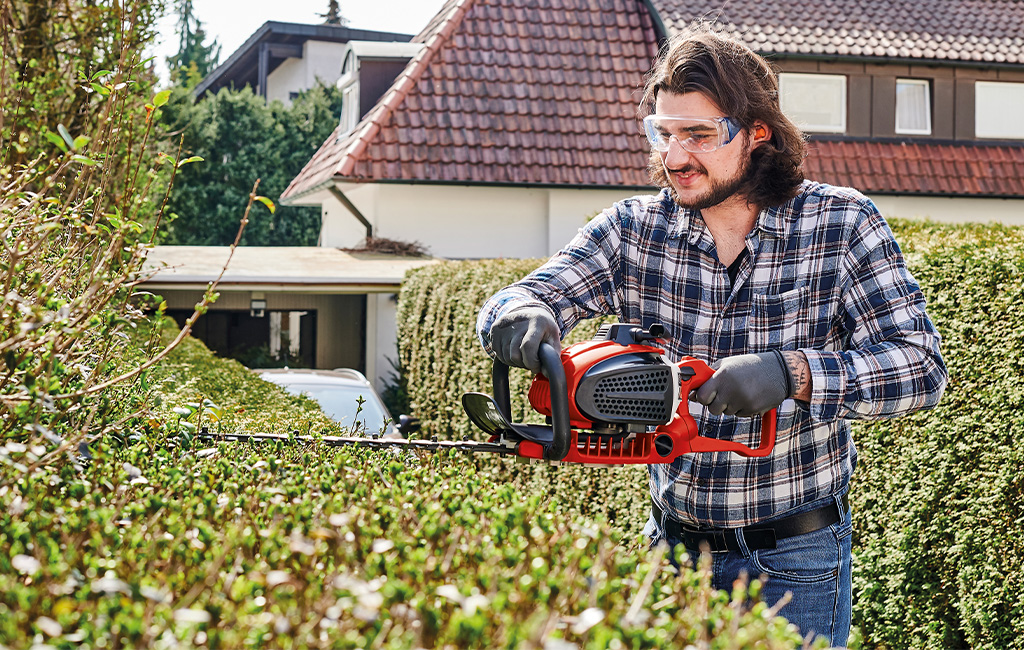
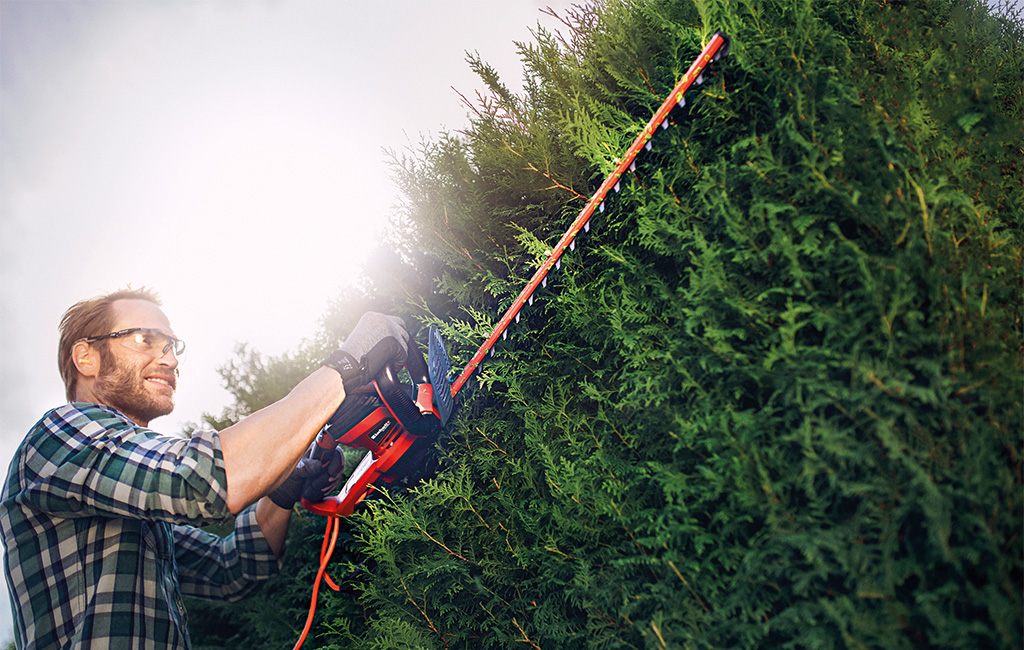
Electric Hedge Trimmer
The corded hedge trimmer never runs out of power. While a petrol hedge trimmer eventually runs out of fuel, an electric hedge trimmer is constantly supplied with electricity. Additionally, the corded hedge trimmer is extremely lightweight compared to the petrol-powered one.
Cordless Hedge Trimmer
Out of all the Einhell hedge trimmers, the cordless one really stands out. It delivers maximum cutting power without the hassle of noise or tangled extension cords. Thanks to our innovative Power X-Change system, there’s no downtime—just swap out the battery for a fully charged one, and you’re back in action!
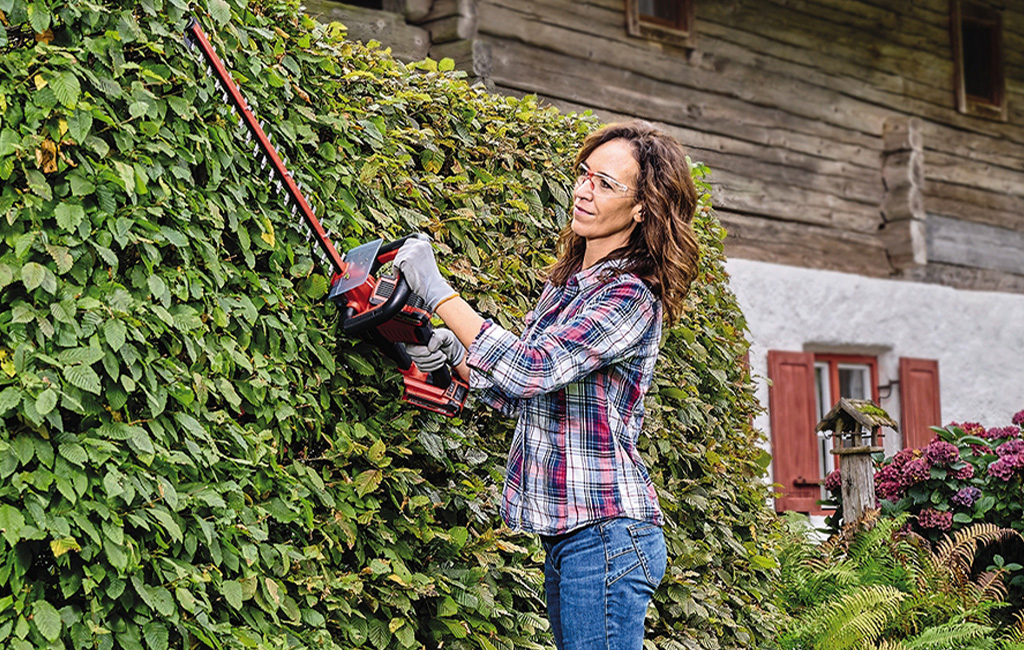
Our recommendation for you
For particularly tall hedges, our cordless telescopic hedge trimmers and electric pole hedge trimmers are perfect for the job. You can easily adjust or extend the handle to suit your needs. A quick tip—check your local building regulations or development plan to see if there’s a height limit for hedges in your area. In most cases, they can’t exceed 2 metres, but it’s always worth confirming with your local council!
Without maintenance, the shears will become dull
Drive aside, the quality of the blade also determines usable results. After cutting, plant juices often remain. These adhesive-like residues can be easily removed after each use with a resin solvent and a soft cloth. For heavy soiling such as leaves or branches, you can remove them either by hand – be sure to wear gloves – or with a brush. To maintain the blade, a special care spray can be used. Also, storing it directly in oil is advisable.
